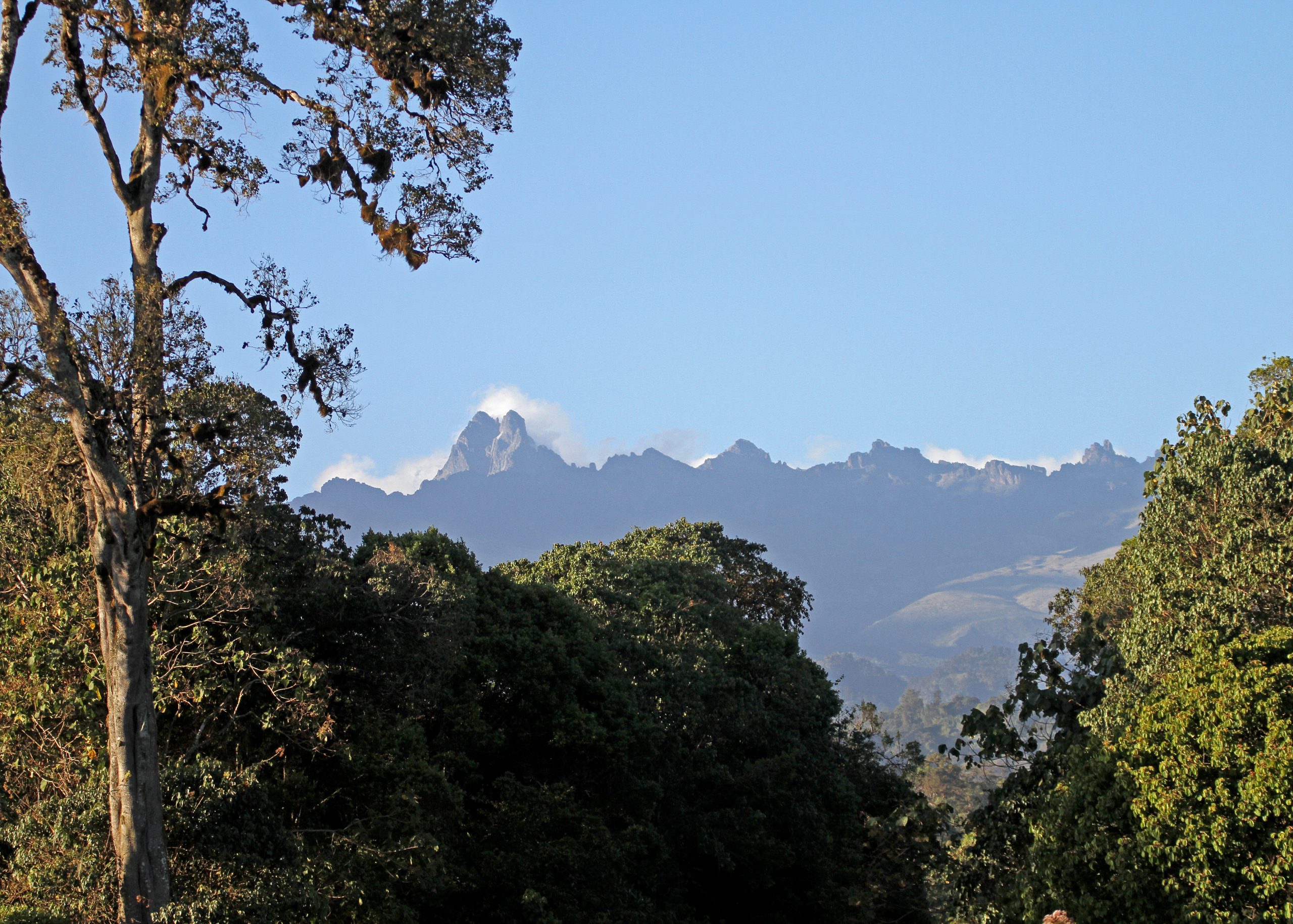By Paul Gacheru
I have a very personal connection with the forests that flank Mount Kenya and their exceptional wildlife: I grew up in the village of Kangema, driving my father’s cattle between the fields and the Aberdare Forest to graze. Father would warn us of the dangers of being trampled by elephants – 3,000 of them roam the bush there, along with remnant populations of black rhino and a vibrant array of bird species, including the endangered Sharpe’s longclaw and threatened Chapin’s flycatcher.
In the 1990s, the government started securing much of the forest through fencing. The idea was to reduce tensions between people and nature, but the evidence suggests it failed. In the old times villagers had to visit their chief to ask permission to fell timber – they understood the value of a tree. But the new physical barriers meant communities became detached from any sense of ownership or stewardship of their ancestral lands. Mt. Kenya forest has lost 20 percent of its closed-canopy forest in the last 20 years, and illegal logging and encroachment by agriculture have been major factors.

Reversing this degradation is not just critical for wildlife: these forests are a vital water tower, supplying more than 8 million people with drinking water in Nairobi and beyond, irrigating 2 million hectares of crops and driving 95 percent of Kenya’s hydroelectric power.
As a boy, I liked to watch the fish jumping in the river where we drew our water and loved being part of my school’s wildlife club. It led me to a degree in wildlife ecology, and today I help guide Nature Kenya’s efforts to return these same landscapes to health – with local people at the heart of things. Since 2010 we have been developing a community forestry model that empowers community associations to set up their own tree nurseries, sowing and growing more than 3 million Indigenous tree saplings over the last two years alone.
Everything is founded in science: using satellite imagery, we have identified 6,200 hectares of degraded areas of Mt. Kenya forest that urgently need restoring; with the Kenya Forest Service’s advice we know the best species to plant; and with help from Trillion Trees partner BirdLife International, we have carried out an ecosystem services assessment that shows the economic value of enriching each site, using metrics like water quality and mitigation of soil erosion.
We’ve supported 32 tree nurseries so far – and crucially, they are largely self-governing. We provide tools, training and the seeds, plus a support to cover three years of weeding, maintenance and monitoring for each tree planted. That element is critical to ensure our rehabilitation of the habitat sticks. We’re achieving more than 80 percent survival rates for our saplings so far, and by returning to study the same forest transects, we can prove beyond doubt that the diversity of native flora and fauna is growing year on year.
In the same stroke, we are significantly boosting the livelihoods of thousands of impoverished people: they earn money not just for tending trees for restoration but also sell their saplings commercially too – and some are adding wood-lots to their own farmland to reduce timber extraction from the forest. I spoke to one man who has made USD 1,500 for his toils in a single year: enough to finish building his house and put his children through school.
Growing up, I observed how forest-edge communities like ours would rally to support each other, such as sharing water – and the village women were often at the fore of these efforts. Those same cooperative principles now inform our restoration approach: typically around two-thirds of our forest association members are female, and one nursery even sets aside separate plots of ground for women, men, young people and the disabled, so that all sectors of society feel the benefit. Meanwhile we’ve refined our template to offer other sustainable sources of income, whether that’s beekeeping, fish-rearing or eco-tourism.
Those villagers now have a stake in the future of the forest again, and they’ve become the first responders when loggers pose threats or fires take hold. It’s great to go back to the communities where I grew up and hear that the river level has risen by 30 centimeters, or that a spring is flowing again where it recently ran dry. And my childhood self is especially inspired by the schools’ project that’s grown from our work, with students nurturing seedlings in milk and juice cartons – Tetra Pak tree nurseries! It sends the roots of restoration deeper. We are fostering the forest guardians of the future.
I feel Nature Kenya has established a tried and tested model that can roll out nationwide – we just need the funds to keep on scaling. The task ahead is huge, but I’m optimistic – especially because the impact of deforestation is already being felt in the pockets of industry. Siltation from deforested land has forced water companies to spend 60 percent more on treatment since 2010, and hydro-power plants are losing 10 to 15 percent capacity. So I spend a lot of my time engaging with the businesses that benefit from the forest ecosystem downstream, persuading them to invest in restoration and entrench sustainability in their systems for decades to come. It is a win-win for people and nature – a win-win for Kenya.

This project is part of the BirdLife Forest Landscape Sustainability Accelerator, partially funded by Trillion Trees. The Forest Landscape Sustainability Accelerator helps local Partners to attract long-lasting investments and explore forest-friendly business opportunities that will safeguard the whole landscape for decades to come.
This article was originally published in Landscape News as part of a narrative series from global conservationists working as part of Trillion Trees.









